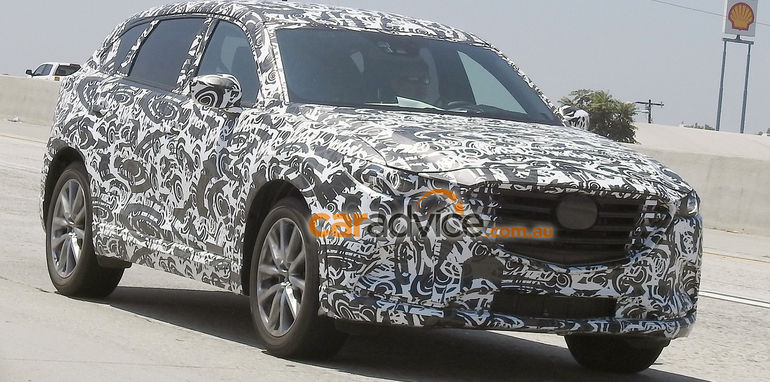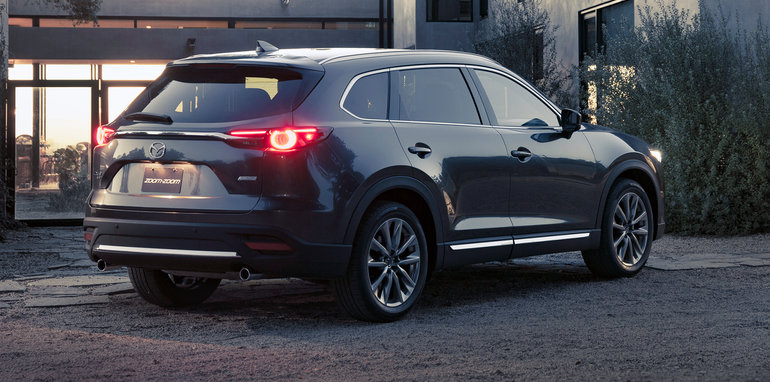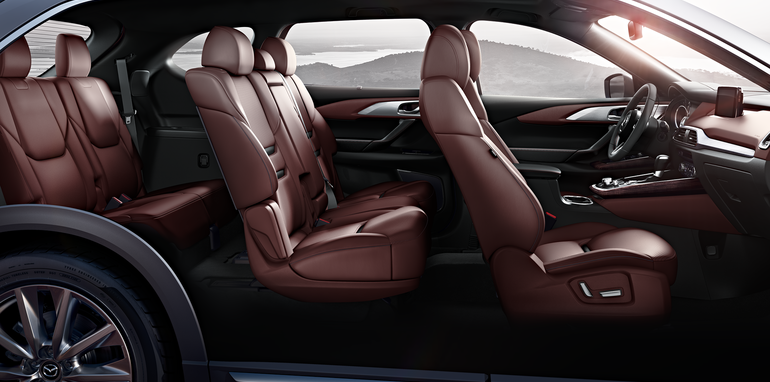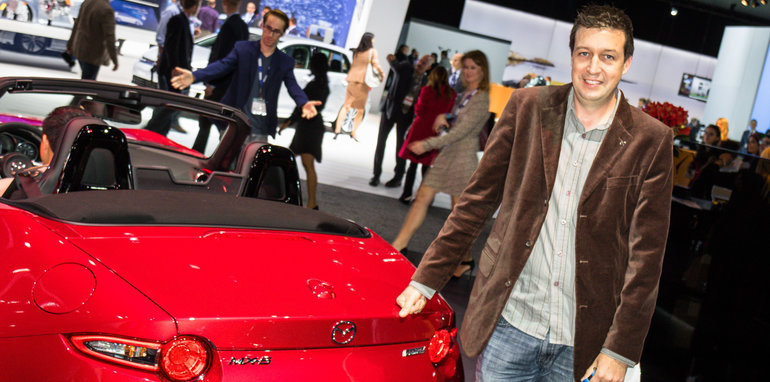Mazda’s all new second-generation CX-9 made its world debut this week at the 2015 Los Angeles Auto Show.
Featuring what Mazda describe as the ‘grandest expression’ of the Kodo design language, a new 2.5-litre turbocharged petrol engine and a completely revised interior, you could be forgiven for thinking this new CX-9 is simply what comes from countless hours of cold, computer-modelled development.
And while that is true to a large extent, the processes that helped Mazda engineers model and test the car during its development are what sets the CX-9 apart.

Above: just one of the many moments the CX-9 had been spied testing.
Speaking with CarAdvice this week, Mazda vehicle development manager Dave Coleman detailed some more unorthodox processes that helped his team place a significant focus on the eventual human interaction and real-world usage the car would face.
“We’re going to give up on some feature content and focus on emotional value â€" and recognise that as a real thingâ€, he said.
Some traditionally technical processes, like suspension tuning, were given a far more ‘organic’ approach to support this methodology. Where a driver automatically moves their body to anticipate cornering movement, passengers don’t tend to be quite as aware.
Above:Â Mazda vehicle development manager, Dave Coleman.
For the CX-9, test passengers had sensors attached to their neck to measure the amount of stress and movement during cornering. The human body subconsciously chooses the smoothest path of movement for any action, and so the Mazda engineers sought to find this harmony for the way the car behaved on the road.
“Nothing that came out of the development process is that radical, it’s mainly common sense… that just isn’t that common.â€
Making the driving position perfectly symmetrical, for example â€" something that is now common to all current Mazdas â€" seems simple, but is something often overlooked by designers.
“There is only so far you can get by putting tangible features into a car. Eventually they stop making a difference to you. Where as if you have something that just ‘connects’, then that matters a lot more.â€

When developing the new engine, Coleman noted that while higher power and torque figures looked better in the brochure, it was the understanding of how customers would likely use the car that defined how the SkyActiv-G 2.5T engine was designed.
The team built a test mule out of a CX-5 diesel (so as to better match the torque from the new engine design), and added ballast to simulate the weight of a CX-9. They then drove around urban areas, following seven-seat family SUVs, and recorded the driving behaviour and performance requirements.
The result? An overwhelming majority of the ‘real-world’ drivers never revved the car higher than 3000RPM, indicating where the peak torque band needed to be.
This philosophy simply suggests that having high output figures at 5000rpm is redundant in a car like the CX-9. Real world sense.

“In addition to stalking drivers, we even hid in the bushes and watched how people used their carsâ€, Coleman said about the development process. He noted that, particularly in the US market, drivers would use the third-row seating for shorter trips (to and from school) where entry and exit speeds for passengers was crucial.
“The second row seats are designed to be able to be folded and moved by a child, as we noted that they were the ones getting in and outâ€, he said. “The driver up front would rarely get out.â€
The goals and targets that the CX-9 had to meet weren’t all easily calculable numbers, either. The car’s ‘Mazda-ness’ is something fundamental to its form and function, and, as Coleman notes “in the business offices, this was a tough market equation to sell. You can’t include it on a spreadsheet.â€
It’s this focus on human interaction that the team believe is what is key to Mazda’s growth and success.
“This is what makes our cars special â€" this is what makes you want a car.â€

Since the auto industry is already a highly competitive field to embark a journey in, it is a smart move to tackle a different approach for this new release. Addressing the emotional aspect of a car would definitely bring the whole marketing strategy to a whole new level. Its acceptance might be slow initially as consumers try to grasp the new concept, but gradually they will learn to accept.
ReplyDelete